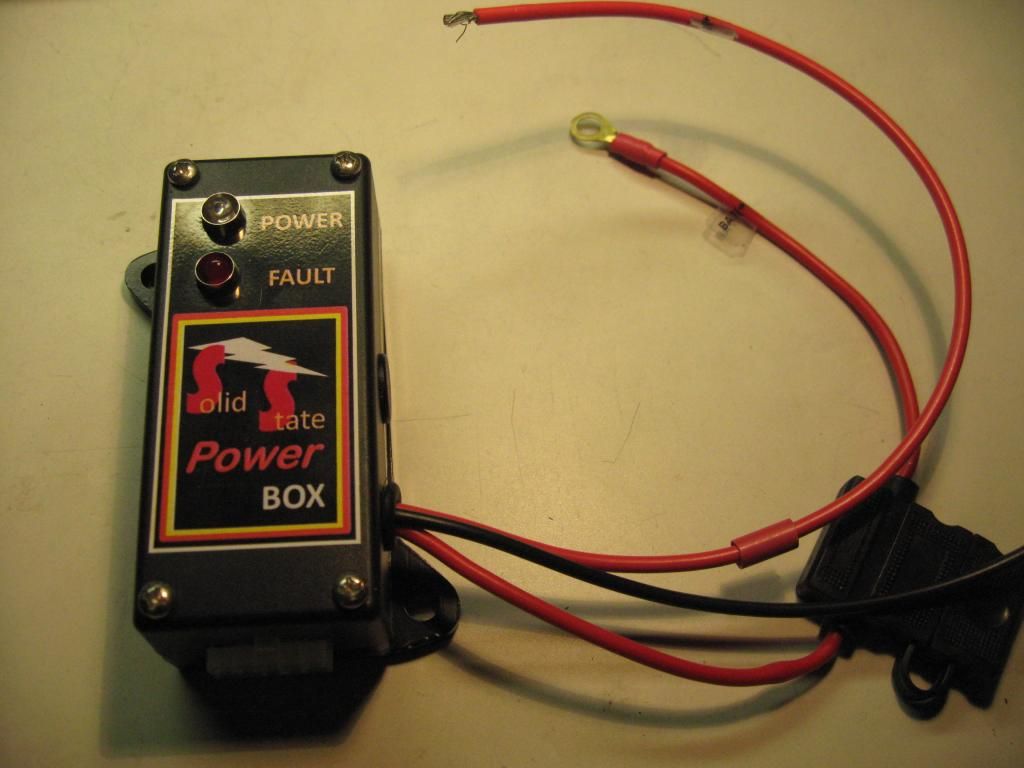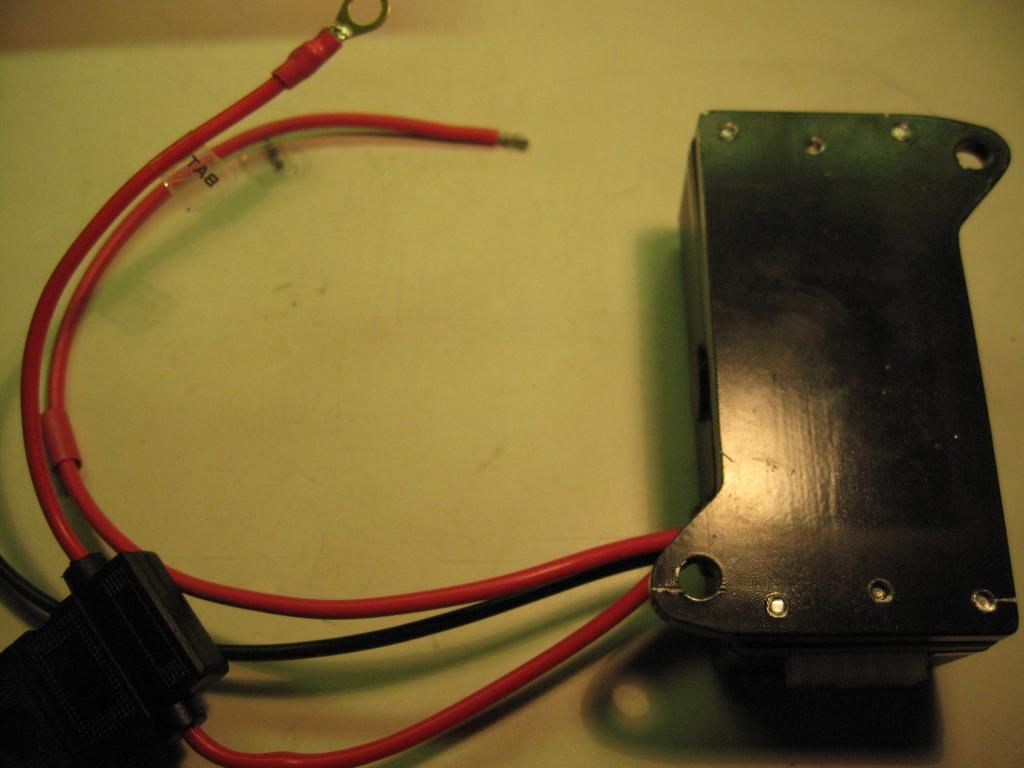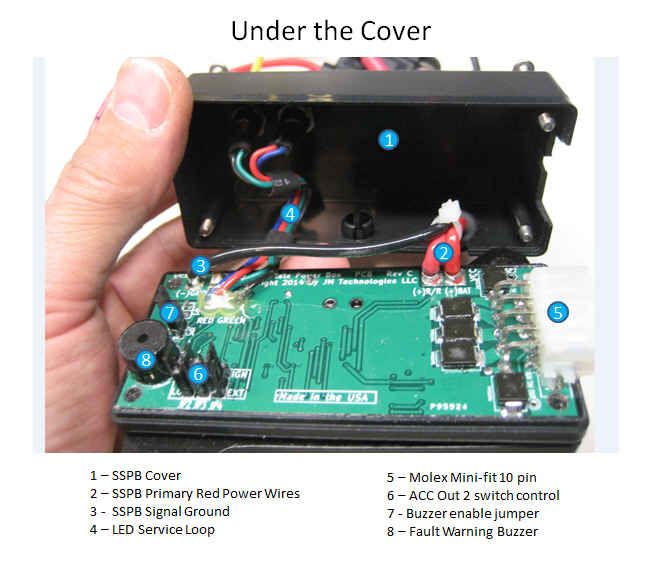EDIT 2/27/2014 : Read about the latest SERIES R/R's that are available
Stator Pages
Status Update 1/17/2014
The first 10 units of the Solid State Power Box with the Rev C PCB's (no red wires) have been completed and delivered. See this video and an overview of the capability and installation.




Status Update 11/30/13
I have started a Standard Installations thread here. Links to install Youtube videos can now be found there.
The SSPB is $150 plus shipping and insurance for a 3 year fix or replace warranty. Small Box Flat rate US domestic is $8.00 and $13 to Canada. Let me know if you are in another country so I can get flat rate pricing there.
To order a SSPB email me at SolidStatePowerBox@gmail.com
STATUS UPDATE 8/14/2013
The Solid State Power Box (SSPB) is a new product designed to improve on the original electrical system of your motorcycle by providing better and safer distribution of that power. What is power distribution? Power distribution is how the electrical power in your motorcycle is routed from its’ sources (i.e. your battery and alternator) to the various electrical components located on your bike. Electricity travels in circuits; the power has to start at a source, get distributed to the loads and then return back to the source to complete that circuit. The SSPB was designed with the whole electrical system in mind. The SSPB was designed to minimize if not eliminate all of the following types of chronic problems motorcycle electrical systems typically experience.
- Dirty and melted fuse box contacts
- Blown fuses and replacement of same.
- Hard to find shorts.
- Dirty and melted IGN/KILL/START switches.
- Excessive Voltage drops to coils, headlamps, horns.
- Poor charging due to circuitous R/R to Battery connections.
- Mysteriously failed components from current surges and voltage spikes.
- Marginal wire sizes.
- Lack of proper grounding.
- Limited space
- unwieldy size of traditional fixes for the list above.
As an example, during the resto-mod of my GS1100ED, I replaced the electrical system with all brand new OEM harness and OEM switches. Within a couple of years I still needed to install a coil relay modification as the bike was hard to start due to low voltage to the coil. This is just one of the classic symptoms of a “simple” motorcycle power distribution DESIGN. The electrical systems of these older bikes are quite similar, and given the technology of the day, the designs were probably the lessor of other evils namely design complexity and unreliability.
Many of you in fact have firsthand knowledge of many of the chronic problems listed above. But while the problems may be understood, it is also understandable that without an engineering background it is probably harder to understand how the SSPB does anything to improve on the list of chronic problems. The SSPB was designed to be unobtrusive and so it was made to fit in place of the stock fuse box. So one might guess that the SSPB is just a better fuse box, but in fact as I have alluded to above, the SSPB does much more than just get rid of fuses. The SSPB improves the general electrical and charging health of your motorcycle by re configuring the overall power distribution of the original design.
The SSPB is not entirely unique in this approach, as there are several fuse box products available on the market that were designed to address at least some of these same classic motorcycle distribution issues. Most aftermarket fuse box and power distribution products you see on the market are after the same thing, improving power distribution and reducing if not solving the issues that stem from the original design problems. The SSPB is also designed to solve those problems but does so in a more comprehensive way and has additional features available from modern automotive grade electronics and design that have never been incorporated into the other products.
Most of the newer product solutions today, are adding into the old electrical system what most motorcycle designers avoided back in the day (relays combined with the fuse boxes). The main reasons they were avoided was the size and unreliability of mechanical relays. As technology has advanced, newer fuse box products offer a single mechanical relay for power distribution which is now more reliable, but still quite bulky. Some products add banks of mechanical relays, but then space generally becomes an issue. Adding a bank of relays and a fuse box with associated connectors takes a lot of real estate and generally more than is available. While there have been improvements, it is still old technology and it has definite limitations.
On the other hand the SSPB which uses solid state automotive technology can implement a full complement of electronic relays using what can only be called "smart switch" technology. This allows the SSPB to implement all the relay functions that were previously needed but get them to fit inside the same space as the original fuse box but without the need for the fuses. This solid state design is much more rugged and reliable than the old mechanical relays, and it all fits into the same space originally occupied by your fuse box.
Beyond the improved power distribution of the SSPB, probably the most important feature of the "smart switch" technology is what I have been calling "Safe Power". Once installed (i.e. all power routed through the SSPB from Battery and R/R) you won't have to worry about damaging anything from electrical shorts and if you do get a short it will be much easier to track it down.
You can short the output of any one of the SSPB channels and the SSPB will current limit to stop any demand for current over 10 amps and if the SSPB gets too hot it will thermal limit cycle . So as the demand (e.g. short goes away) the SSPB goes right back to delivering full current. No power resets required. So by providing "safe power" through current limiting and thermal limits, the need for a conventional fuse box goes away. It is replaced with a better form of power distribution that is only possible by using a new design approach that uses solid state “Smart Switch” electronics. All 5 SSPB channels have this capability.
- UNSWITCH (always on) – SSPB Red(0))
- SIGNAL CIRCUITS (O/G on GS Suzuki)
- IGNITION CIRCUITS (O/W on GS Suzuki)
- HEADLAMP CIRCUITS (O/R on GS Suzuki)
- SWITCHED Accessory – SSPB Red(2).
These 5 SSPB circuits match one for one the 4 primary circuits your existing harness has with an extra switched Red(2) for expansion. There is 50 amps of individual circuit capacity although the design limits the total current to the 15 amps which is what the GS needs.
The SSPB has the equivalent of "built in" relays in that you can control the distribution of 4 circuits using external switches rather than having to run the power through those switches. This means you don't have to worry about voltage drops through the IGN , KILL, Start buttons any more. There is also a feature to use a 4th switch to control another device of your choosing for extra driving lights, heater or other accessory. So there are built in IGNITION relays Modification, built-in (2of 3 relays) HEADLAMP relay Modification with startup cutout and at least up to 10 amps a Horn or other relay modification all included in the SSPB. If you are counting that is the equivalent of 5 Bosch type automotive relays all built into the SSPB.
In designing the SSPB, I looked to improve and streamline the final installations as compared to the installations of other offerings. This involved looking at how to optimize the power and grounding for all electrical power assuming a clean slate, as opposed to how to modify what was there. So the net result is that the SSPB is just as easy to connect up to your bike, and also has the benefits of being much easier to keep your charging system in good health. Connections between the R/R and Battery have been separated from the harness and have been simplified to give the best performance. If you couple the SSPB with a Series R/R you will have a very sophisticated and efficient electrical system that you won’t even find of much more modern bikes.
.png)
.png)












Comment